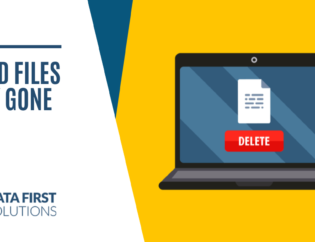
However, not all advertisements are legitimate. Some can actually be scams that trick users into sharing sensitive data or downloading malware. This is what’s known as malvertising.
In 2020, it was reported that malvertising incidents had increased by 350% compared to the previous year. At the same time, research shows these attacks account for 27% of all phishing attempts.
Below, we’ll explore what malvertising is in more detail and provide trusted tips to help you protect yourself and your organization.
What Is Malvertising?
Malvertising is a form of online advertising that uses malicious online ads to spread malware or steal personal information. These ads can appear on legitimate websites, making it difficult for users to detect and avoid them.
A successful malvertising attack can have devastating consequences for both individuals and businesses. The potential loss of personal and financial information can ruin a business’ reputation while putting victims under stress.
Moreover, recovering from an attack is undoubtedly time-consuming and expensive. Your company may be offline for days, if not weeks, depending on the nature of the incident.
There are several different types of malvertising, each with its own method of delivering malware or stealing personal information. Some of the most common types of malvertising include:
- Drive-by downloads: Hackers use s a technique called “drive-by downloads” to automatically download malware onto a user’s device without their knowledge or consent. This can happen when a user simply visits a website that contains a malicious ad.
- Malicious redirects: This type of malvertising uses ads that redirect users to a malicious website, where they may be prompted to enter personal information or download malware.
- Ad injectors: Here, criminals modify existing ads on a website to include malicious code or links.
- Clickjacking: This type uses hidden layers on top of ads to trick users into clicking on a link or button that they didn’t intend to.
- In-app malvertising: Malicious ads are delivered within mobile apps to trick users into downloading malware or giving away personal information.
- Malware in the ad: In this attack, the hacker embeds malware in the ad itself, which can be downloaded onto a user’s device simply by clicking on the ad.
It’s important to note that, while these are the most common malvertising forms in 2023, new techniques are emerging all the time. It’s therefore vital to stay informed, and take steps to protect yourself from all types of malvertising.
How To Protect Against Malvertising Attacks
Here are some steps you can take to protect your organization from malvertising:
- Keep your devices updated: Always make sure that your computer and mobile devices are up to date with the latest security patches and anti-virus software. This will help to protect against known vulnerabilities that could be exploited in malvertising attacks.
- Be cautious of unfamiliar advertisements: Avoid clicking on ads from unfamiliar or untrusted sources. If a deal seems too good to be true, it probably is.
- Use an ad-blocker: Installing an ad-blocker can help to prevent malicious ads from appearing on your screen. This can be especially helpful on websites that have a high volume of ads.
- Keep your browser updated: Keeping your browser updated with the latest version will ensure that it’s equipped with the latest security features, which can help to protect against these attacks.
- Be aware of pop-ups: Be cautious of pop-up ads that ask you to download software or update your browser out of the blue. Use a VPN: Using a Virtual Private Network (VPN) will encrypt your internet connection, meaning you’re much less likely to receive malicious ads.
Of course, in an ever-changing threat landscape, many small and medium-sized organizations may find defending against malvertising and other threats like phishing, ransomware and DDOS attacks overwhelming.
If your organization falls into this bucket, you may want to consider working with a managed IT and security provider like Data First Solutions. With our in-depth knowledge of cybersecurity, we can help you defend against even the most complex attacks. Plus, thanks to our in-depth knowledge of malvertising tactics, we can deploy solutions for you that stop pesky, malicious pop-ups in their tracks.
Trust Us With Your Security
As malvertising becomes more commonplace, protecting your business is paramount. A data breach can have severe consequences that harm the bottom line. Investing in cybersecurity is a must.
Our expert team is ready and waiting to help you improve your cybersecurity posture. Contact us today to find out we can support you.









